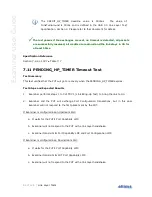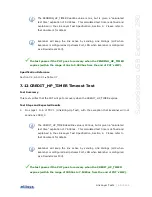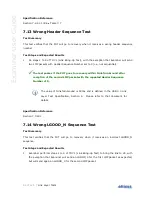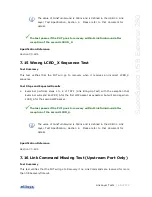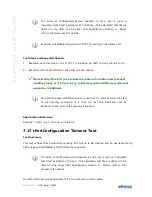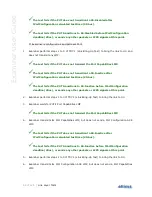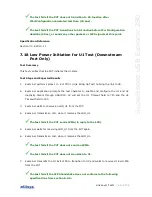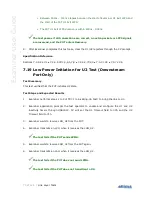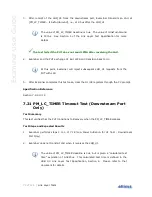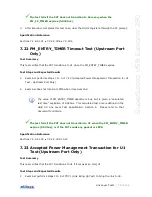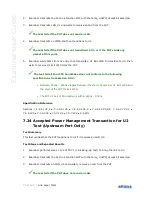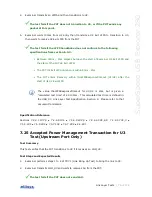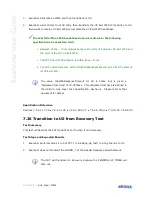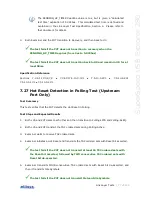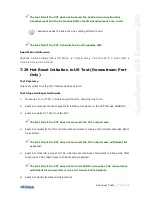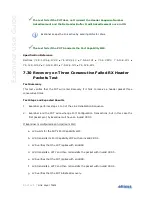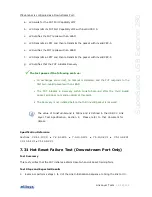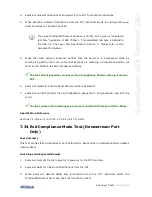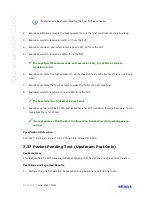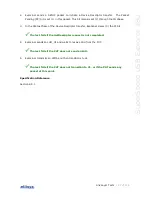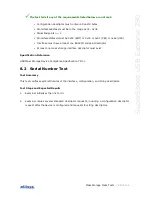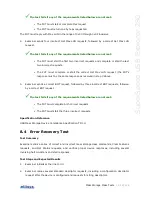
76 of 124 |
Link Layer Tests
Ex
ami
n
er
U
se
r
G
u
ide
3.
Examiner transmits an LPMA and then transitions to U3.
4.
Examiner waits 500ms from U3 entry then transmits the U3 Exit LFPS to transition to U0,
then waits to receive U3 Exit LFPS to complete the U3 Exit LFPS handshake
The test fails if the LFPS handshake does not conform to the following
specifications from section 6.9.2:
Between 300ns – 10ms elapses between the start of Examiner U3 Exit LFPS and
the start of the PUT U3 Exit LFPS.
The PUT U3exit LFPS duration is within 80us – 10ms.
The PUT enters Recovery within tNoLFPSResponseTimeout (U3) after the start of
its U3 Exit LFPS.
The value tNoLFPSResponseTimeout for U3 is 10ms, but is given a
“calculated test time” of 10.0505ms. This calculated test time is defined in
the USB 3.0 Link Layer Test Specification, Section 4. Please refer to that
document for details.
Specification Reference
Sections 7.2.4.1.1#7,9 ● 7.2.4.2.1#4 ● 7.2.4.2.4#2,3,7 ● 7.2.4.2.7#2,3 ● 7.5.9.1#3 7.5.9.2#5
7.26
Transition to U0 from Recovery Test
Test Summary
This test verifies that the PUT transitions to U0 when it is in Recovery.
Test Steps and Expected Results
1.
Examiner performs steps 1 to 4 of TD7.1 (Link Bring-Up Test) to bring the link to U0.
2.
Examiner does not transmit the LGOOD_7 of the Header Sequence Advertisement.
The PUT will transition to Recovery because the PENDING_HP_TIMER will
time out.

